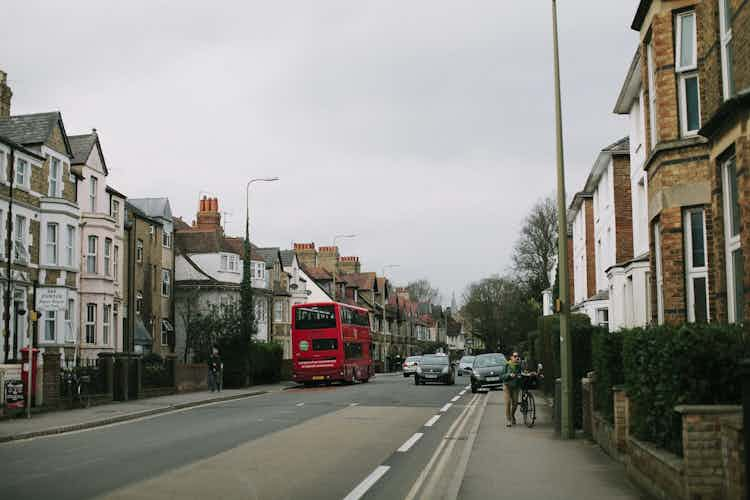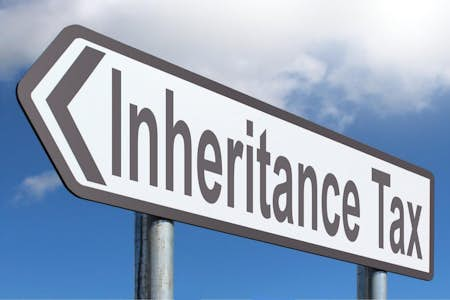The inheritance tax property allowance, or the residence nil-rate band (RNRB), reduces the inheritance tax (IHT) due on your estate when you die. For the tax year 2022/23, it is £175,000. You can use it alongside your regular inheritance tax allowance, currently £325,000, meaning you can shield up to £500,000 from taxation.
You need to leave property to your children (adopted children, foster children, or stepchildren also count) or your grandchildren to be eligible. Also, your estate must be worth less than £2 million to benefit from the full £500,000 tax-free threshold. If you are part of a married couple and pass on your home (or share of a home) to a husband, wife or civil partner when you die, there is no inheritance tax bill to pay.
The RNRB may change in the future, however, so it’s always best to seek professional advice for up-to-the-minute guidance on your specific situation. Let’s explore the inheritance tax property allowance in more detail.
How does the residence nil-rate band work?
When you die, a 40% inheritance tax applies to the value of your estate exceeding £325,000. The RNRB of £175,000 means you can effectively increase the tax-free threshold of your estate to £500,000. The RNRB is due to remain frozen at £175,000 until 2028. You may find you can use other additional allowances, which can also help reduce the inheritance tax bill.
Here’s how it works.
Eligibility for the RNRB
The following factors will affect your eligibility to claim the RNRB:
- Who the property is left to: For your estate to qualify for the RNRB, you must leave your home (or your relevant share in it) to what the HM Revenue and Customs (HMRC) deem your “direct descendants” - your children. Parents, brothers and sisters, nephews and nieces are not direct descendants.
- The number of properties you own: The RNRB can only be used for one home - typically your main residence. The property does not need to be in the UK to be eligible for the RNRB.
- If you lived in the property: You must have owned and lived in the property for a time. Buy-to-let properties or properties you never lived in are not eligible for the RNRB.
The effect of downsizing
If you sell, gift, or move to a less valuable home before you pass away, you can still qualify for the Residence Nil Rate Band (RNRB) if you meet the conditions for a downsizing addition. To qualify, the sale or downsizing must have occurred on or after July 8, 2015, and your former home must have initially qualified for the RNRB. As with the RNRB, you must leave your estate to direct descendants. The downsizing addition typically equals the RNRB lost when the former home is no longer part of the estate.
Working out the value of the home
If you are making a will or a trust as part of estate planning, it can be helpful to know how the RNRB affects you - for which you need to know how much your home is worth. To do so, use the open market value of the home minus any debts, which includes any outstanding mortgage. If you only own a portion of the property, only include what your share is worth. If you are an executor of a will, you’ll need to do the same on behalf of the deceased to calculate how much RNRB allowance affects the overall inheritance tax figure.
Calculating the available RNRB
You can use HMRC’s online calculator to calculate how much RNRB an estate could be allowed. It will subtract the allowance from the value of the whole estate, not just the value of the home. It will include any unused RNRB transferred from a spouse or civil partner. The amount will be the lower of the:
- Value of the home, or share inherited by the direct descendants.
- Maximum RNRB available when you die.
Allowance tapering
The RNRB is gradually tapered out if the estate's value exceeds £2 million in the current tax year (2022/23). For every £2 over £2 million, the RNRB reduces by £1.
Claims and applications
To use the allowance, executors of the estate will need to apply for it when they’re going through probate and dealing with your financial affairs, such as your life insurance policy if you have one.
Inheriting a spouse or civil partner’s allowance
Typically, the first spouse or civil partner to die would leave the bulk of their estate, including the family home, to their surviving partner. A surviving spouse or civil partner can also inherit any IHT/RNRB allowance not utilised by the deceased. So, you could potentially increase your tax-free exemption to £1 million:
- IHT: 2 x £325,000 = £650,000.
- RNRB: 2 x £175,000 = £350,000.
- Total = £1 million.
Therefore, you could leave the following assets to your beneficiaries with no inheritance tax liability if you die after your spouse or civil partner:
- £650,000 in assets, excluding the family home.
- Family home worth up to £350,000 if left to a direct descendant.
It is crucial to be aware of the allowances available and that you can inherit those not used by your deceased spouse or civil partner. Compared to the allowances available for an individual, the potential savings are up to £200,000 (40% of £500,000) when inheriting allowances.
Am I eligible for any other type of exemption?
It depends. There are other ways to reduce the inheritance tax due on your estate. For instance, if you give away your home before you die and move out and live for another seven years, there won’t normally be any inheritance tax to pay. However, if you want to live in your property after giving it away, you’ll have to abide by the following rules:
- Pay rent to the new owner (the rent must be similar to the average monthly local rental property cost).
- Pay at least a share of the bills.
- Live in the property for seven years or more.
However, you won’t have to pay rent to the new owners and can still qualify for this exemption if:
- You only give away a share of your property.
- You live in the property with the new owners.
If you don’t meet these rules, it will count as a “gift with reservation” and be added to the value of the estate when you die. A gift with reservation is defined as something you give away but continue to benefit from.
Are any gifts exempt from IHT?
Certain gifts may be subject to inheritance tax, and whether the recipient has to pay depends on several factors, including:
- The relationship of the person to whom you gave a gift.
- How much the gift was.
- How long ago you gave the gift.
The seven-year rule
If you give away any part of your estate and then live for at least a further seven years afterwards, there will be no tax to pay. This rule counts for anyone, not just loved ones and direct descendants. Should you pass away within seven years, the amount of tax payable will depend on how long ago you gave the gift. You gain taper relief if the gift was given between three and seven years ago. Anything under three years will be liable for 40% tax. However, taper relief only applies if the total of all the gifts made in the seven years before you die exceeds the £325,000 inheritance tax threshold.
Taper relief charges
| Years between gift and death | Rate of tax on the gift |
| 3 to 4 years | 32% |
| 4 to 5 years | 24% |
| 5 to 6 years | 16% |
| 6 to 7 years | 8% |
| 7 or more | 0% |
What counts as a gift?
The gov.uk website stipulates that gifts include:
- Money.
- A house, land or buildings.
- Household and personal goods, for example, furniture, jewellery, antiques, or stocks and shares listed on the London Stock Exchange.
- Unlisted shares you held for less than two years before your death.
Furthermore, a gift can include money you lose if you sell something for less than its market value. A prime example of this would be if you sold your family home to your child for less than it would reach on the market. The difference is what you give your child. So, imagine you sell your property to your child for £350,000, but it’s worth £400,000. You have technically given them £50,000, which they will need to pay inheritance tax on if you pass away within seven years of selling the property.
Any gifts you give to a surviving spouse or someone you are in a civil partnership with are exempt from inheritance tax. You can give them as much as you want throughout your life, regardless of tax year, as long as they are domiciled in the UK permanently and you're legally married or in a civil partnership.
Any gifts you make to charities or political parties are also free of inheritance tax.
Tax-free allowances on gifts
In each tax year, you can gift money or possessions free of inheritance tax. These allowances can materially help with inheritance tax planning, though it is always a good idea to seek legal advice, too. Currently, there are the following exemptions and allowances:
- Annual exemption.
- Small gift allowance.
- Gifts for weddings or civil partnerships.
- Regular payments.
Let’s explore those here.
Annual exemption
You can give away up to £3,000 in total in gifts each tax year without them being added to the value of your estate. You can give the entire amount to one person or split the £3,000 between several people. You can carry over any unused annual exemption into the next tax year - but for one year only.
Small gift allowance
This equates to £250 per person in each tax year, as long as you don’t use another allowance for the same person. Any birthday or Christmas gifts you give from regular income are exempt from inheritance tax.
Gifts for weddings or civil partnerships
You can give up to £5,000 to a child, £2,500 to a grandchild or great-grandchild, or £1,000 to any other person in each tax year as a tax-free gift to someone getting married or entering a civil partnership.
Regular payments
You can give regular payments to any person, with no limit on how much you can give, and it will remain tax-free. You need to meet these criteria:
- After you have paid your own living costs, you must still be able to afford the payments.
- You have to make the payments from your regular monthly income (so not through the sale of an asset).
You can combine this allowance with any other allowance, except the small gift allowance.
Utilising your inheritance tax allowance
Inheritance tax can be substantial, which is why using your RNRB is so important. It can reduce how much your estate must pay the Government after you die. However, it's important to note that tax laws can, and do, change. For the most current and accurate information regarding inheritance tax property allowances in the UK, it's advisable to consult a legal or financial professional and refer to the latest guidance from HMRC.
Image Credit: Lina Kivaka at Pexels







